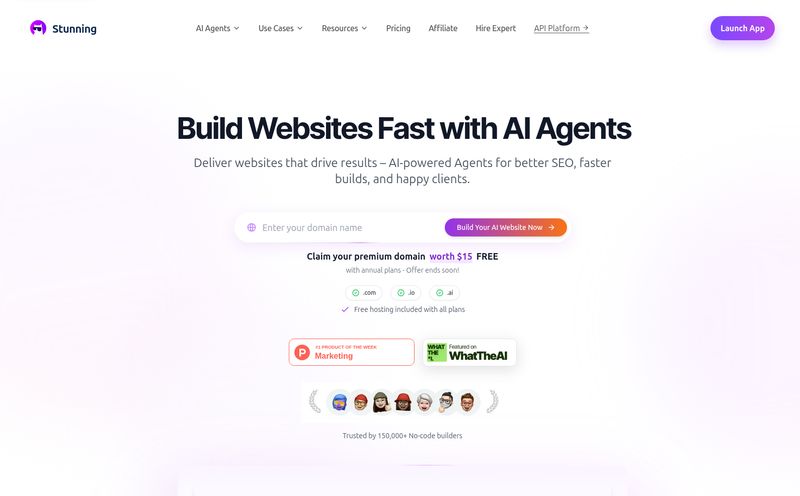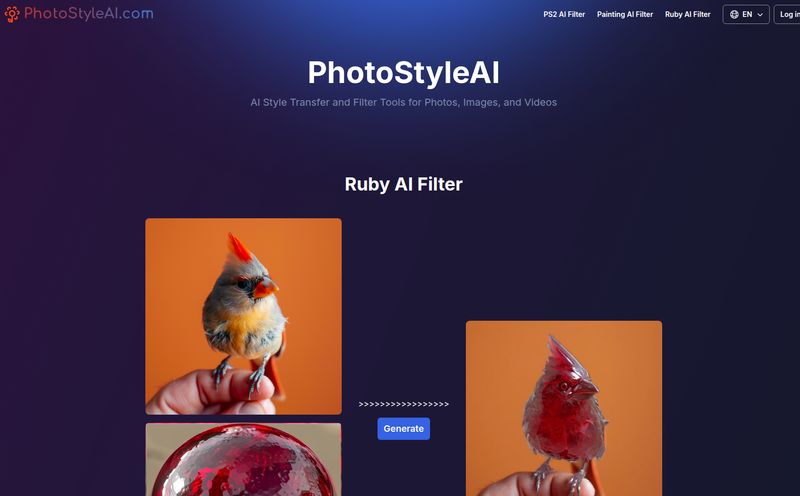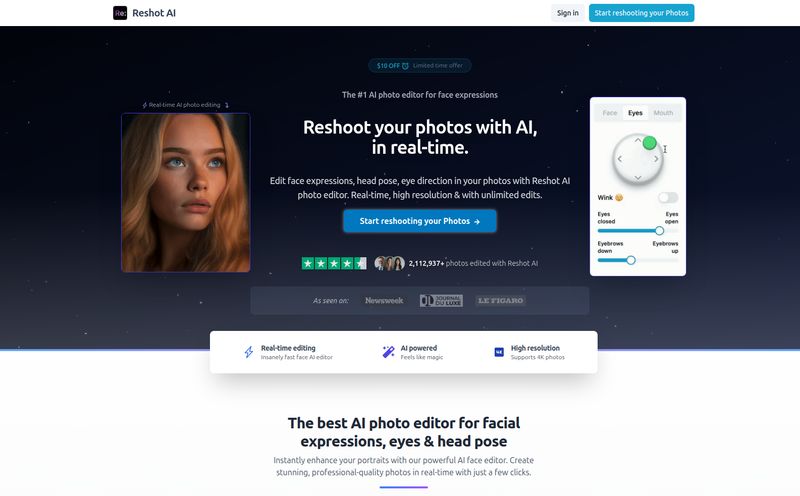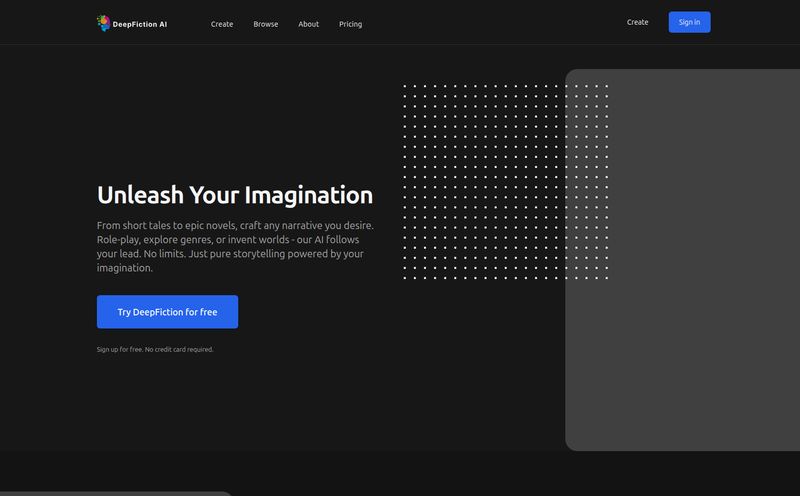Is Shutterstock Still the King of Stock Photos? My Honest Take.
Let's have a real chat. You and me. As someone who’s been swimming in the deep end of the content pool for years, I can tell you one thing for sure: the thirst for good visuals is absolutely unquenchable. Every blog post, every social media update, every ad campaign... it needs an image. Or a video. Or something to stop the endless scroll.
And for as long as I can remember, Shutterstock has been the big, imposing answer to that problem. It's the household name, the 800-pound gorilla in the room of stock content. But in a world where AI can spit out a picture of an astronaut riding a unicorn in three seconds and free sites like Unsplash are everywhere, is the big gorilla still king of the jungle? Or is it just an expensive relic?
I’ve used Shutterstock on and off for a decade, for my own blogs and for client projects. I've celebrated its wins and cursed its cheesy clichés. So let's get into it—a real, no-fluff look at what Shutterstock is in 2024, and whether your money is well spent there.
So, What is Shutterstock, Really?
Most people hear "Shutterstock" and just think "stock photos." And yeah, that’s its bread and butter. But thinking of it as just a photo library is like calling Amazon just a bookstore. It's so much more now.
Imagine a digital warehouse the size of a small country. Inside, you've got over 450 million items. In one aisle, you have pristine 4K video clips. In another, you've got every kind of music track imaginable, from corporate synth-pop to epic orchestral scores. There are aisles for vector illustrations, sound effects, social media templates, you name it. It’s less of a photo album and more of a creative's entire supply closet.
And recently, they’ve added a new wing to this warehouse: an AI workshop. They now have tools that let you generate completely new images from a text prompt or smartly edit the ones you find. It’s clear they aren't planning on getting left behind.
The Good Stuff: Why I Keep My Subscription
Despite the competition, there are solid reasons why professionals (myself included) keep paying for Shutterstock. It boils down to a few things that just make life easier.
That Absolutely Gigantic Library
I can't overstate this. The sheer volume is staggering. I once needed an image of a red-eyed tree frog on a specific type of tropical leaf, shot from a low angle. It was for a weirdly specific client in the eco-tourism space. A quick search on free sites gave me... well, frogs. Generic frogs. On Shutterstock? I had three pages of options to choose from. When you need something specific, that selection saves you hours of desperate searching. Time is money, right?
Licensing That Doesn’t Require a Law Degree
This is huge. The biggest fear for any content creator is getting a cease-and-desist letter with a five-figure invoice attached because you used an image you shouldn't have. Shutterstock’s standard license is royalty-free, which means you pay once and can use it in your projects forever (within the rules, of course). It’s straightforward. This peace of mind is, for me, a massive part of the value proposition. You're not just buying a photo; you're buying the legal certainty to use it without looking over your shoulder.
The AI Tools are Genuinely Useful
I'll admit, I was skeptical. Every company is slapping "AI" onto their products these days. But Shutterstock's implementation is pretty solid. Their AI image generator is great for creating abstract backgrounds or conceptual images that just don't exist in the real world. Need a visual metaphor for 'data synergy'? Good luck finding that in a camera. But the AI can whip something up. Plus, their editing tools, like the one-click background remover, are massive time-savers.

Visit Shutterstock
Let's Be Real: The Annoyances and Downsides
Okay, it's not all perfect. There are days when I log into Shutterstock and let out a heavy sigh. It has its flaws, and it would be dishonest not to talk about them.
Avoiding That Stocky Feeling
You know what I mean. The unnaturally diverse group of coworkers pointing at a transparent whiteboard. The woman laughing joyfully while eating a salad. Stock content can sometimes feel... sterile. Because so many people use the platform, the most popular images get seen everywhere. It takes effort to dig past the first page of search results to find something that feels authentic and fresh. If you just grab the first thing you see, your site might end up looking like a hundred others. A little originality goes a long way.
The Price Tag Can Sting a Bit
Shutterstock is not the cheap option. It's a premium service with a premium price tag. For a solo blogger or a small startup bootstrapping their way to success, the monthly subscription can look pretty intimidating. There's no getting around it; this is an investment. You have to weigh the cost against the time you save and the quality you get. Sometimes, for some projects, it's just not in the budget.
Who Is Shutterstock Actually For?
So, who should bite the bullet? In my experience, it breaks down like this:
- The Busy Marketing Agency: For an agency juggling multiple clients, Shutterstock is a no-brainer. The massive library, team accounts, and bulletproof licensing are exactly what you need to move fast without taking risks.
- The Large Corporation: Big companies need the scale, the variety (video, music, photos), and the legal indemnification that Shutterstock provides with its enterprise plans. It's a safe, reliable choice for corporate content teams.
- The Serious Content Creator or Blogger: If you're publishing multiple articles a week and traffic is your game, the time saved is probably worth the cost. You can get high-quality, relevant images fast, which helps with engagement and SEO.
- The Occasional User or Small Startup: A full subscription might be overkill. This is where their on-demand packs come in handy. You can buy a pack of 5 or 25 images and use them as you need them, without a recurring monthly fee. Its a good way to test the waters.
A Quick Peek at Shutterstock's Pricing
Pricing for platforms like this can change, so I won't list specific numbers that will be outdated in a month. But I can tell you how it’s structured. Generally, you have two main paths:
"You can either go with a monthly/annual subscription, which gives you a set number of downloads per month (the best value if you're a high-volume user), or you can buy On-Demand Packs, where you pay a flat fee for a certain number of downloads that you can use over a year."
They also have different plans for individuals and teams, and of course, custom pricing for large enterprises. Your best bet is to head directly to their pricing page to see the latest deals and plans that fit your specific needs.
Frequently Asked Questions I Always Get
Are Shutterstock images really royalty-free?
Yes, but it's important to understand what that means. It means you pay a one-time fee to license the image and can use it multiple times for multiple projects without paying additional royalties. It does not mean you own the image or can do absolutely anything with it. There are still rules, outlined in their Standard and Enhanced licenses, about how it can be used (e.g., you can't use it on merchandise for sale with a standard license).
Can I use Shutterstock images for commercial projects?
Absolutely. That's one of its main purposes. The Standard License covers most typical commercial uses, like on your website, in social media, and in digital ads. For very large print runs or for use in products for resale, you'd need to spring for an Enhanced License.
Is the Shutterstock AI generator any good?
It's surprisingly decent! I've found it's best for creating unique backgrounds, textures, or conceptual art that doesn't need to be photorealistic. It's another tool in the toolbox. It won't replace a real photographer for most things, but for specific digital needs, it's a fantastic and fast option.
What's better, Shutterstock or a free site like Unsplash?
It's a classic "you get what you pay for" scenario. Free sites are great for beautiful, artistic shots when you're on a tight budget. However, their libraries are much smaller, the content can be less commercially viable, and the licensing can sometimes be a bit of a gray area. With Shutterstock, you're paying for a massive, searchable selection, specific commercial content, and legal protection. For a serious business, that's often a necessary cost.
How much does a Shutterstock subscription cost?
It varies widely based on the plan. Image-only plans are cheaper than plans that include video and music. Monthly subscriptions can start from around $29 for a small number of images and go up significantly from there. Your best bet is to check their live pricing page.
My Final Verdict
So, is Shutterstock still the king? In many ways, yes. It's a professional tool for professionals. While it may not have the indie-cool factor of some smaller sites, it delivers on its core promise: a massive, searchable library of high-quality, legally-safe creative assets for nearly any project you can dream up.
The price can be a hurdle, and you have to put in a little work to avoid the generic-looking stuff. But the time it saves and the legal peace of mind it provides are invaluable for any serious business or content creator. It’s an investment, but one that, in my long experience, usually pays for itself.
Reference and Sources
- Shutterstock Official Website
- Shutterstock Pricing Page
- A Brief History of the "Women Laughing Alone With Salad" Meme



